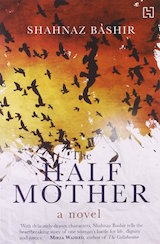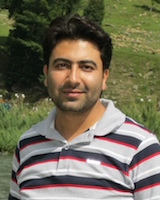The Half Mother
Shahnaz Bashir
|
The term half widow comes from a deeply inhuman use of state military power by which thousands of men have been picked by the police or the Army in the North-East, in Punjab and now in Kashmir. The wives of these men do not know if they are alive or dead and if they are wives or widows. But the term half mother cannot be used as the other half (sister or brother, if siblings share one parent) because a mother becomes a mother in the event of the birth or adoption of her child. The title of Shahnaz Bashir’s debut novel — about a mother’s struggles with the memory of and her search for her lost son — is surprising. The novel has those unique strengths so missing in our fiction these days: a sense of location, Kashmir; a sense of inner lives of some of our most neglected people. The story spans three generations in Natipora near Srinagar: Ghulam Rasool Joo or Ab Jaan, his daughter Haleema, and her son Imran. This structure serves to set up the contrast between the peaceful years before the insurgency and the violence that erupted once insurgency took hold. One night Imran is mistaken for a separatist and hauled away by the Army. I wondered what the writer would do in the second half. It is here that Bashir’s talent shines: he structures the book on the famous Aristotelian five acts. What follows is the mother’s struggle, her running from one Army camp to another, going to the police, even a politician, finding some support from the Imam and a journalist, bonding with other half mothers and families, getting some leads, but to no avail. Bashir draws stunning vignettes: Ab Jaan’s application for a job, his cycle in his locality, Imran’s school days, the fortification of the valley from children’s point of view, some of the best young men going towards the separatist cause, the Army’s skirmishes with ordinary people, the barely self-sufficient Haleema’s climb into systematic and brutal poverty… The most chilling is the life of inmates in jails from the point of view of the barber Abdus Salaam. While the novel unfolds as a tragedy, the space that Bashir created but did not utilise is the chorus. If he had explored the story a bit more laterally, he could have woven in parallel stories from the Valley: the Pandit exile, the politics of the separatist groups, how a marginalised person sees the national capital… A single story about a place can become representative if it becomes metaphorical of other parallel stories. Bashir comes close but remains focused on his story. He does push the depiction of reality beyond the literal but I hope in his next works he develops a wider panoramic view. The Half Mother brings to light one of the greatest human tragedies of the covert war in Kashmir. Acknowledging the horror is the first step towards wanting real peace to return. Amandeep Sandhu | 6 Sept 2014 | The Hindu
|

 Hardcover: 214 pages
Hardcover: 214 pages Shahnaz Bashir
Shahnaz Bashir